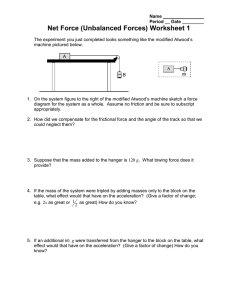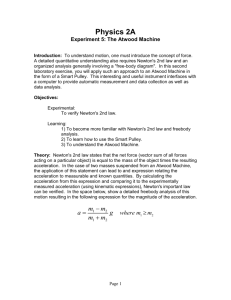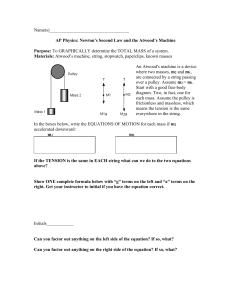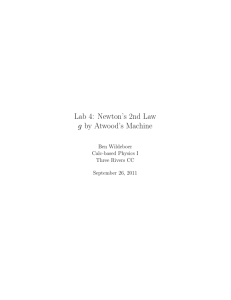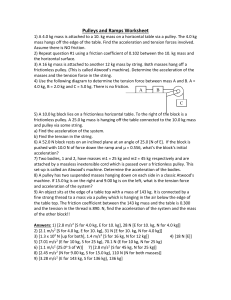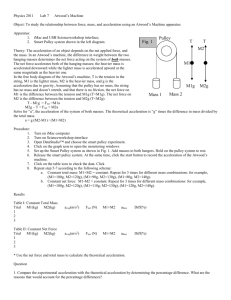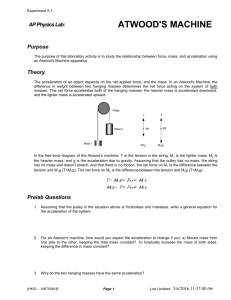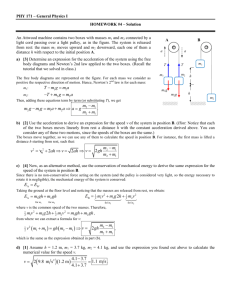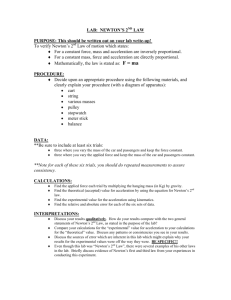Lab Exercise: Atwood's Machine
advertisement
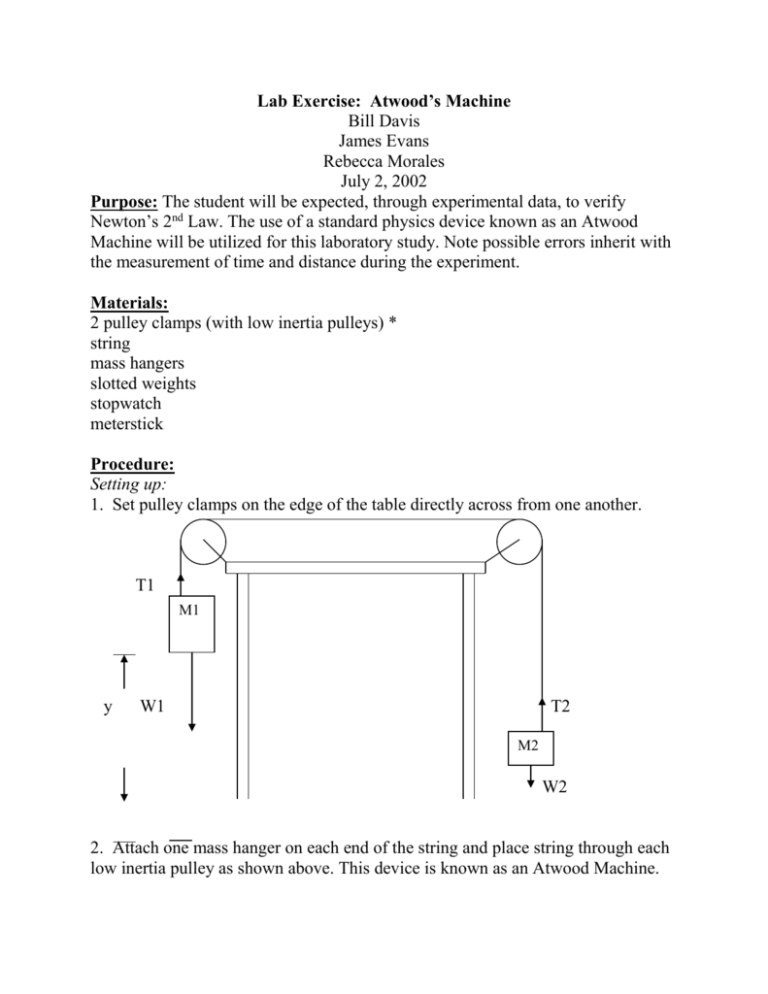
Lab Exercise: Atwood’s Machine Bill Davis James Evans Rebecca Morales July 2, 2002 Purpose: The student will be expected, through experimental data, to verify Newton’s 2nd Law. The use of a standard physics device known as an Atwood Machine will be utilized for this laboratory study. Note possible errors inherit with the measurement of time and distance during the experiment. Materials: 2 pulley clamps (with low inertia pulleys) * string mass hangers slotted weights stopwatch meterstick Procedure: Setting up: 1. Set pulley clamps on the edge of the table directly across from one another. T1 M1 y W1 T2 M2 W2 2. Attach one mass hanger on each end of the string and place string through each low inertia pulley as shown above. This device is known as an Atwood Machine. 3. Measure and record the distance between the bottom of the mass hanger and the floor. This is the height of the fall. Height __________ (meters)= y 4. Theoretical Acceleration: Newton’s 2nd Law states : Net F = ma In this machine the Net Force is the difference between the gravity forces on each side of the pulley system. W1-T1+T2-W2=(M1+M2)a since T1=T2 and Wt=mg Net F = M1 g – M2 g = (M1 + M2) a Making the theoretical acceleration as follows: NetForce ( M 1 M 2) g = ( M 1 M 2) SumofMasses a = 5. Experimental Acceleration: Distance traveled = y Time for the fall = t Using the equation : a y= 1 v t 2 at i 2 and the assumption v =0 i 2y t 2 Trials: 1. Place equal masses on each mass hanger simultaneously. There should be no movement.* Complete the following table by the following procedure: 2. Increase the mass (M1) by 0.010 kilograms and record the time that it takes for that hanger to reach the floor. 3. Repeat step 2 until added masses result in .100 kg increase on the M1 side. Note:M1 > M2 in every case except trial 1. Trial T (s) 1 2 3 4 5 6 7 8 9 10 11 M1(kg) M2(kg) Net Acceleration Acceleration Force(N) (theoretical) (exp.) Questions: 1. How well did your theoretical compare to your experimental values? Hint: calculate percent error _______________ 2. What factor (y or t ) would introduce the most error? Hint: Look at your percent error as the time grew shorter. 3. How would you go about decreasing the error in your answer to #2? 4. Does Newton’s 2nd Law appear to apply to the Atwood Machine? Below: Show an example calculation, using a set of trial values from your chart, of : Net Force: Theoretical Acceleration: Experimental Acceleration: * If the system shows too much friction, add small masses to W1 until a slight pull causes uniform speed during the fall of W1. At this point assume the extra initial mass was to overcome friction and ignore that mass in the calculations.
